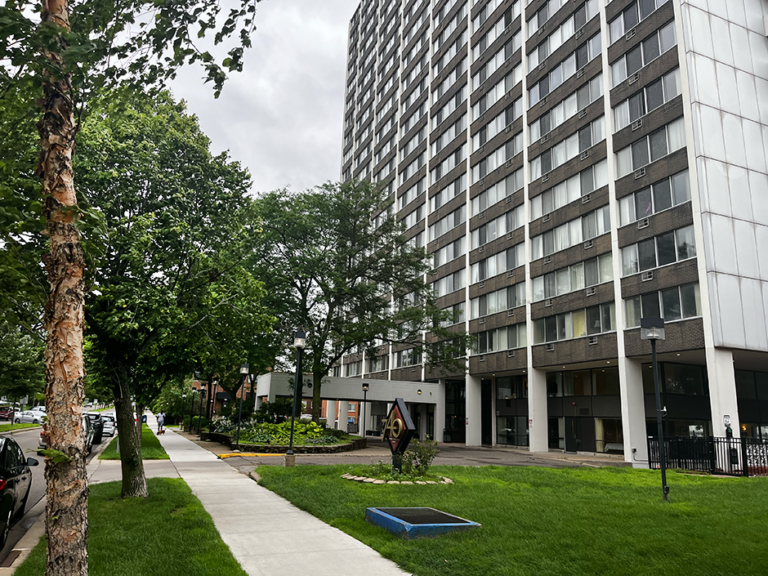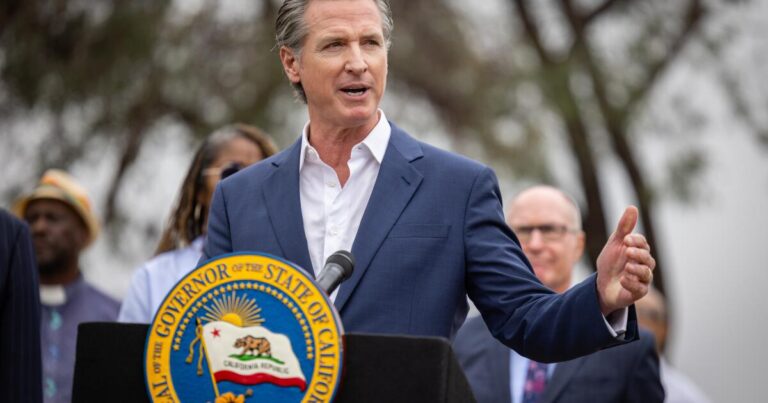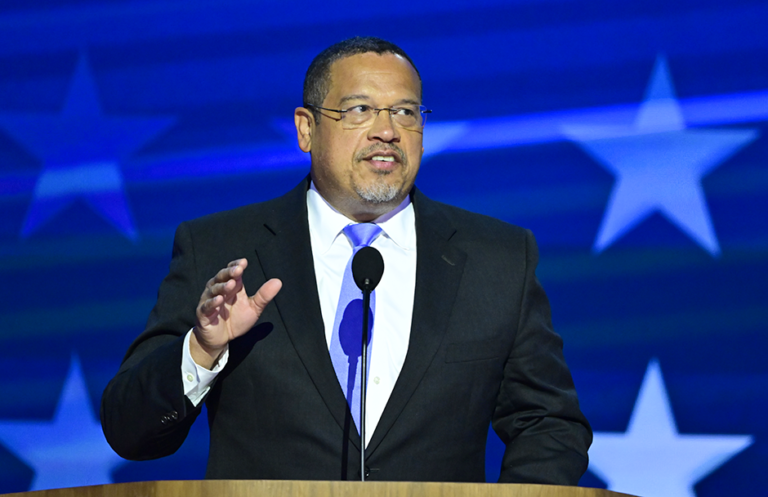A season of protests, forfeits and lawsuits ended quietly Saturday on the volleyball court with San José State losing the Mountain West Conference women’s tournament final to Colorado State.
The loss deprived San José State from claiming the conference’s automatic bid to the 64-team NCAA tournament, which could have extended the controversy centered on the team’s transgender player. Instead, top-seeded Colorado State earned the automatic bid by winning in four sets.
Fewer than 200 spectators attended the match at UNLV, and the fans were respectful, cheering every player during pregame introductions and during the action. Players encouraged one another throughout the match and exchanged hugs when it was over.
The only bit of political activity came when Colorado State star player Malaya Jones and teammates Kennedy Stanford and Naeemah Weathers knelt during the national anthem. Colorado State coach Emily Kohan told reporters the players have knelt before matches since 2020.
“They’ve knelt since their freshman year, when the Black Lives Matter movement was going on, and, in this program, we raise critical thinkers to make decisions for what’s important to them,” Kohan said. “And, for those three, they’re Black players, and it’s been important to them for five years. And they’ve stood their ground for saying that this is something that they believe in, and we’ve all supported them.”
The focus on volleyball and sportsmanship was a welcome departure from a roller-coaster season in which four Mountain West teams — Boise State, Wyoming, Utah State and Nevada-Reno — each chose to forfeit or cancel two conference matches to San José State. Boise State also forfeited its conference tournament semifinal match to the second-seeded Spartans, who had a first-round bye and only played one match in the tournament.
The transgender player has been on the San José State roster for three seasons after transferring from a college on the East Coast, although this is the first season opponents have protested the player’s participation. The player is not being named by The Times because they haven’t publicly identified as transgender.
The issue became public when San José State co-captain Brooke Slusser joined a lawsuit in September against the NCAA filed by former All-American swimmer and anti-trans-athlete activist Riley Gaines. The suit alleges that NCAA transgender eligibility policies violate Title IX and the 14th Amendment’s Equal Protection Clause. Slusser alleges in the lawsuit that the inclusion of a transgender player poses an unfair advantage and safety hazards.
The NCAA adopted new rules a year ago pertaining to transgender athletes, who must document sport-specific testosterone levels at the beginning of their season and again six months later. They also must document testosterone levels four weeks before championship selections.
“We are steadfast in our support of transgender student-athletes and the fostering of fairness across college sports,” said John DeGioia, chair of the NCAA board of governors and Georgetown president. “It is important that NCAA member schools, conferences and college athletes compete in an inclusive, fair, safe and respectful environment and can move forward with a clear understanding of the new policy.”
Nevertheless, the schools that forfeited volleyball matches have the backing of politicians in their states. Idaho’s Republican Gov. Brad Little recently signed an executive order barring sports teams at Boise State and other public schools in the state from playing against teams with transgender athletes.
San José State was left to piece together its season against opponents willing to play. Colorado State was one of those.
“Our team played their hearts out today, the way they have done all season,” San José State coach Todd Kress said in a statement after the conference tournament loss. “This has been one of the most difficult seasons I’ve ever experienced and I know this is true as well for many of our players and the staff who have been supporting us all along. Maintaining our focus on the court and ensuring the overall safety and well-being of my players amid the external noise have been my priorities.”
Slusser, San José State associate head coach Melissa Batie-Smoose and 10 other current and former players filed another lawsuit Nov. 13 aimed at having the transgender player removed ahead of the conference tournament, stating that her inclusion violated Title IX rights for gender equity in federally funded institutions. But a federal judge last Monday rejected the lawsuit, and a day later, another judge rejected Slusser’s appeal.
The transgender player took the court along with Slusser and San José State was defeated, ending a turbulent season that Kress said included attacks on social media.
“Our team prepared and was ready to play each match according to established Mountain West and NCAA rules of play,” Kress said in his statement. “We did not take away anyone’s participation opportunities. Sadly, others who for years have played this same team without incident chose not to play us this season.
“To be clear, we did not celebrate a single win by forfeiture. Instead, we braced for the fallout. Each forfeiture announcement unleashed appalling, hateful messages individuals chose to send directly to our student-athletes, our coaching staff, and many associated with our program.”
























